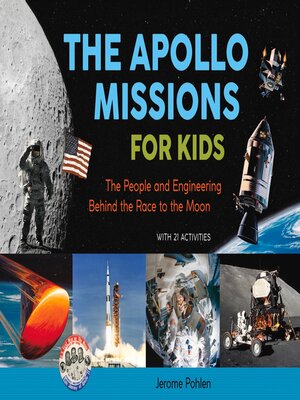The Apollo Missions for Kids
ebook ∣ The People and Engineering Behind the Race to the Moon, with 21 Activities · For Kids series
By Jerome Pohlen

Sign up to save your library
With an OverDrive account, you can save your favorite libraries for at-a-glance information about availability. Find out more about OverDrive accounts.
Find this title in Libby, the library reading app by OverDrive.



Search for a digital library with this title
Title found at these libraries:
| Library Name | Distance |
|---|---|
| Loading... |
In 1961, President Kennedy issued a challenge: before the end of the decade, the United States would land a person on the moon and return him safely to Earth—a bold proclamation at the time given that only one US astronaut had ever been to space, for just 15 minutes. To answer President Kennedy's call, NASA embarked on the Apollo missions: a complicated, dangerous, and expensive adventure involving 400,000 people. Before the missions were over, NASA astronauts had made eleven Apollo flights, six of which landed on the moon, and eight astronauts had lost their lives. The Apollo Missions for Kids tells the story of this pivotal era in space exploration from the perspective of those who lived it—the astronauts and their families, the controllers and engineers, and the technicians and politicians who made the impossible possible. The book includes a time line, resources for further study, and places to visit to see Apollo mission artifacts, along with 21 hands-on activities to better understand the missions and the science behind them. Kids will: - Determine what they would weigh on the moon
- Learn to identify the moon's features
- Demonstrate orbital mechanics with a marble and a shallow bowl
- Calculate how far away the moon is using sports equipment
- Recreate the shape and size of the command module
- Eat like an astronaut and make "space food"
- Design a mission patch
- And much more!







